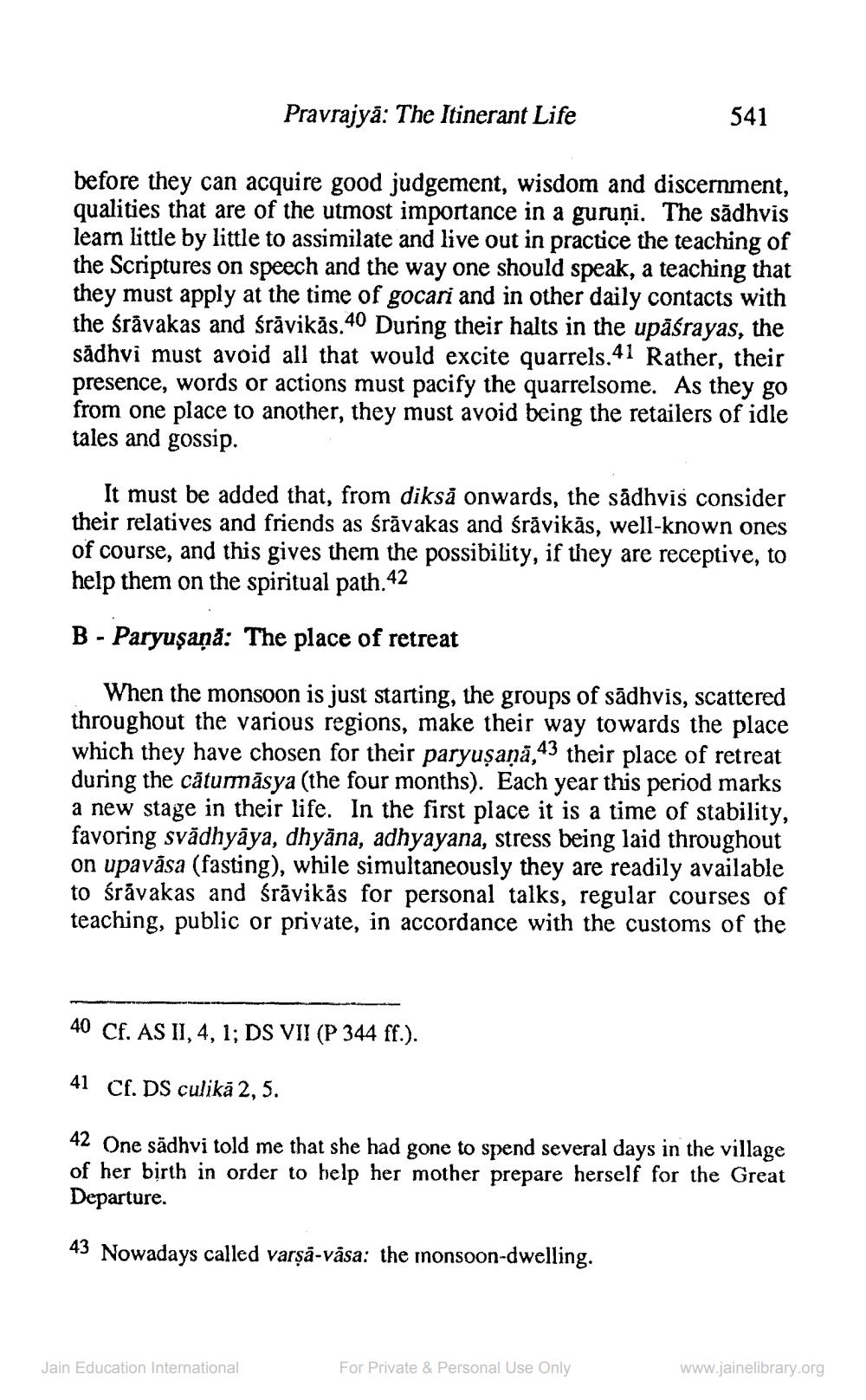________________
Pravrajya: The Itinerant Life
541
before they can acquire good judgement, wisdom and discernment, qualities that are of the utmost importance in a guruņi. The sādhvis learn little by little to assimilate and live out in practice the teaching of the Scriptures on speech and the way one should speak, a teaching that they must apply at the time of gocari and in other daily contacts with the śrävakas and śrāvikās.40 During their halts in the upăśrayas, the sādhvi must avoid all that would excite quarrels.41 Rather, their presence, words or actions must pacify the quarrelsome. As they go from one place to another, they must avoid being the retailers of idle tales and gossip.
It must be added that, from diksă onwards, the sadhvis consider their relatives and friends as śrăvakas and śrāvikās, well-known ones of course, and this gives them the possibility, if they are receptive, to help them on the spiritual path.42
B - Paryusaņā: The place of retreat
When the monsoon is just starting, the groups of sādhvis, scattered throughout the various regions, make their way towards the place which they have chosen for their paryusaņā,43 their place of retreat during the cāturmāsya (the four months). Each year this period marks a new stage in their life. In the first place it is a time of stability, favoring svādhyāya, dhyāna, adhyayana, stress being laid throughout on upavāsa (fasting), while simultaneously they are readily available to śrāvakas and śrávikås for personal talks, regular courses of teaching, public or private, in accordance with the customs of the
40 Cf. AS II, 4, 1; DS VII (P 344 ff.).
41 Cf. DS culikā 2,5.
42 One sädhvi told me that she had gone to spend several days in the village of her birth in order to belp her mother prepare herself for the Great Departure.
43 Nowadays called varṣā-vāsa: the monsoon-dwelling.
Jain Education International
For Private & Personal Use Only
www.jainelibrary.org




